DepositMO has produced three tools to enhance repository deposit. Here we describe the first of those tools, the Microsoft Word Add-in deposit tool.
The developer of the tool, Richard Boardman from the School of Engineering Sciences at the University of Southampton and a DepositMO project developer, has written a User Guide. This guide covers installation, use, and advanced features such as how to add and markup metadata using Word to ensure that metadata is recognised and reproduced in the repository deposit process.
In this case we are concerned with using the tool and submitting documents, that is, how it was used in the user tests, and so just that section is reproduced from the guide in this post. If you wish to find out more about installing the tool and other features, please see the full user guide. A link to download the tool will be provided at the end of this post.
Installation of this tool requires the use of Windows and the latest release of Microsoft Office/Word 2010. We chose to work with Word as it is a popular authoring tool, widely used among researchers and scientists to write research papers and create materials that are likely to be deposited in institutional repositories. In addition, Microsoft has been seeking to extend the use of Word for digital science by supporting plugins, applications that provide additional functionality required by science authors, such as science and maths markup, DTDs and deposit in arXiv. The deposit tool described here is another such plugin.
Although it is popular, adoption of the latest version of Word and Windows is not universal. So that we did not exclude possible test users, we set up and installed the tool so that the test was not dependent on the user’s equipment.
Since working with users we have been asked if the tool works with other applications in Office, such as Powerpoint. It does not. Emulation of the tool for Powerpoint is possible but not simple.
The following extracts are taken directly from the User Guide.
Using the add-in
Once the add-in has been installed, you should verify that it is available in your copy of Microsoft Word 2010. To do this, start up Microsoft Word 2010 and look for a new entry along the ribbon at the top of the screen.
Figure 1: DepositMO 2010 Word Add-in is visible at the end of the ribbon tabs
Clicking on the DepositMO tab will display the basic controls for the add-in. Show and Hide on the Repository control group will show and hide the main DepositMO control panel. These will by default appear at the right-hand side of the window.
Specifying an Endpoint in the Quick submission group, and clicking Submit will bring up a dialogue box prompting you for your username and password for that endpoint, and allow you to submit the current document to the repository.
Clicking About DepositMO 2010 in the About group will bring up basic information about the add-in.
Figure 2: DepositMO ribbon controls
Submitting a document
Let’s walk through the deposition process with a new document. Enter some text on to the empty Microsoft Word document.
Figure 3: Creating a basic document
Before you can deposit this to the repository, you must first save it on to your computer.
Figure 4: Saving the basic document
If you do not do this, then the add-in will prompt you to save it later before deposition can occur. Clicking Show in the Repository control group of the ribbon will bring up the main control panel for deposition.
Figure 5: Show the repository control panel
The main control panel can be seen now on the right of the window. This has a number of controls for accessing repositories.
Figure 6: The repository control panel in the Microsoft Word window
The top section of the panel allows you to enter details of the target repository: your repository’s location (sometimes referred to as an endpoint), your username at that repository, and the password associated with that username.
Figure 7: Repository endpoint and user details
After entering these details, you can then submit the document to the repository by clicking the Submit button underneath.
Figure 8: Submit and update buttons
The add-in will then send your document to the remote repository. The progress of the submission is then displayed in the Messages box at the bottom of the panel.
Figure 9: Add-in messages
If the submission was successful, then a message similar to the one above will be displayed. This indicates where a copy of our document resides (note that the original still exists where you saved it locally earlier). If it was not successful, then you should check the endpoint and your credentials (username and password), and additionally check the repository by visiting the area on that repository where you would usually manage your deposits.
Figure 10: Document location field
On a successful submission, the Document location field is automatically updated with the remote location of this document.
Figure 11: Panel appearance after a successful deposition
If you look at the panel now our deposition has successfully completed, you can see that the Repository location remains unchanged, as does the Username and Password, but the Document location is now different, as explained above. The Messages can be reviewed by scrolling up the little text area.
You can review your recent submission to the remote repository by visiting it with your web browser.
Note that as our example document contained no information about the title or authors of the document, there is correspondingly little detail on the server
Figure 12: Reviewing the submission in the remote repository
Download the Add-in
This ends our extracts in this post. If you wish to learn about updating a document submitted to repository and other ways to use to use this tool, continue reading the User Guide.
Now you know the basics of how to use the Word Add-in tool a you may want to download it to use with your copy of Word 2010. This download can be found among our collected project resources. The guide has instructions for installation.
The next post will introduce the second of the repository deposit tools developed by the DepositMO project and subjected to user testing, the Watch Folder tool.


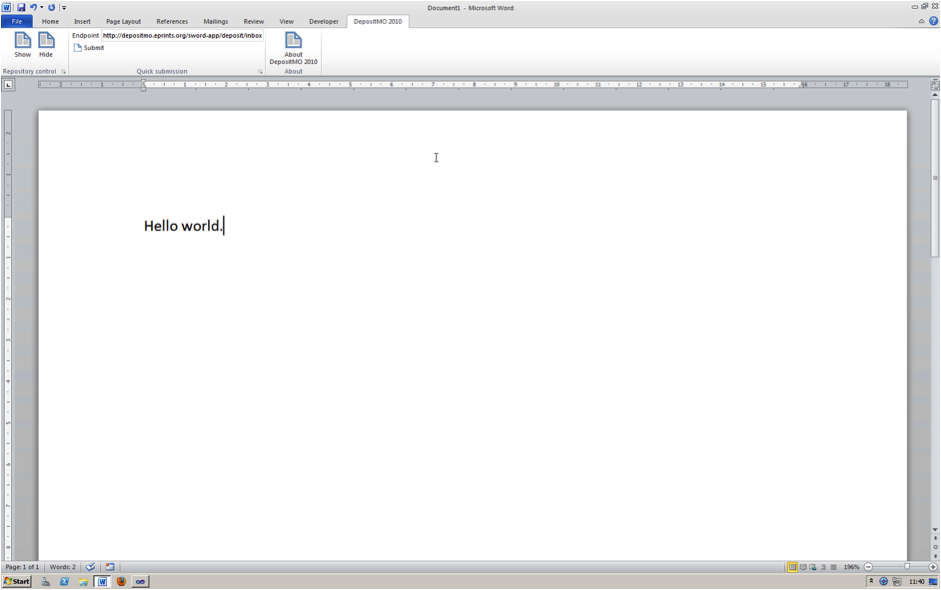
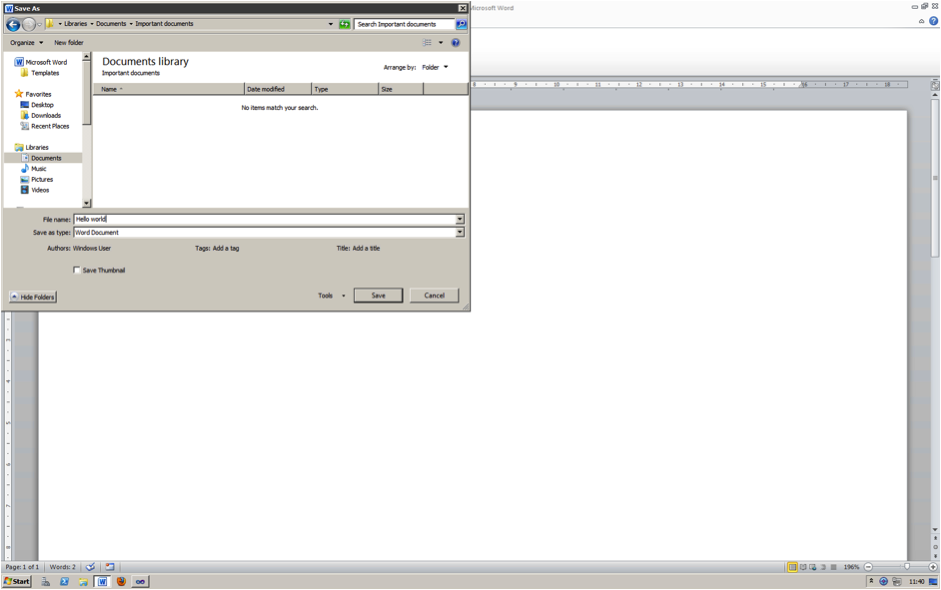
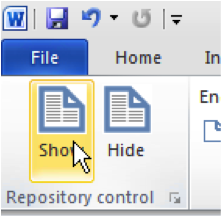
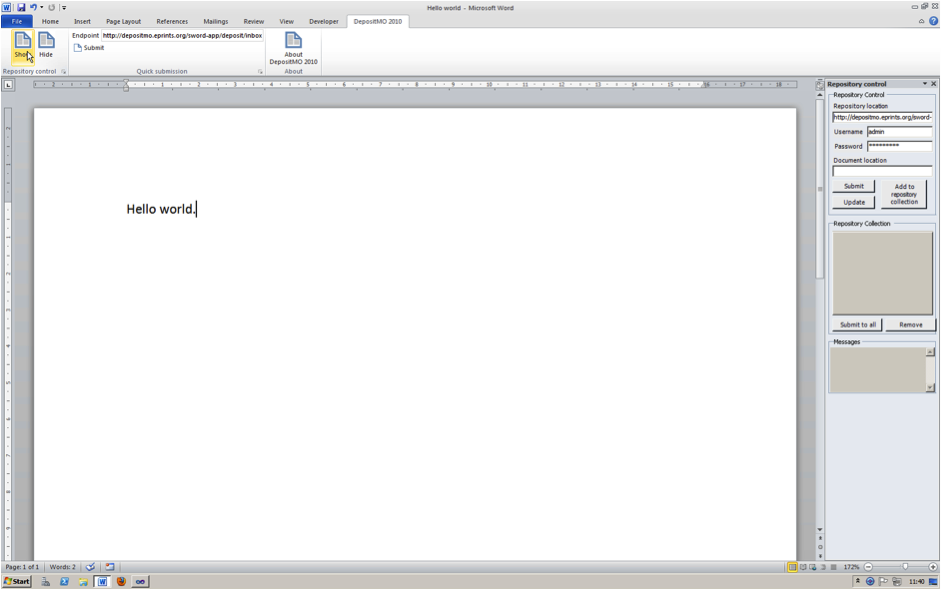
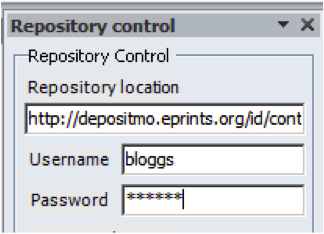
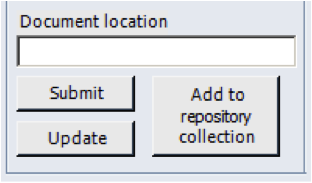
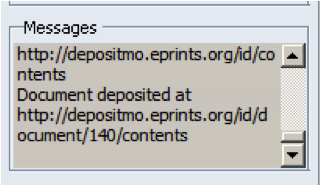

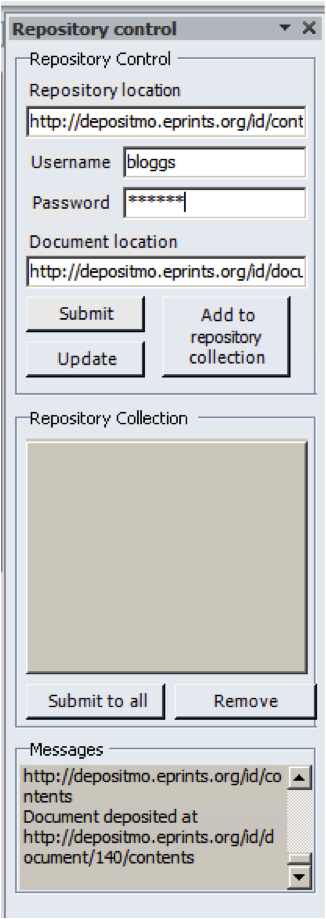
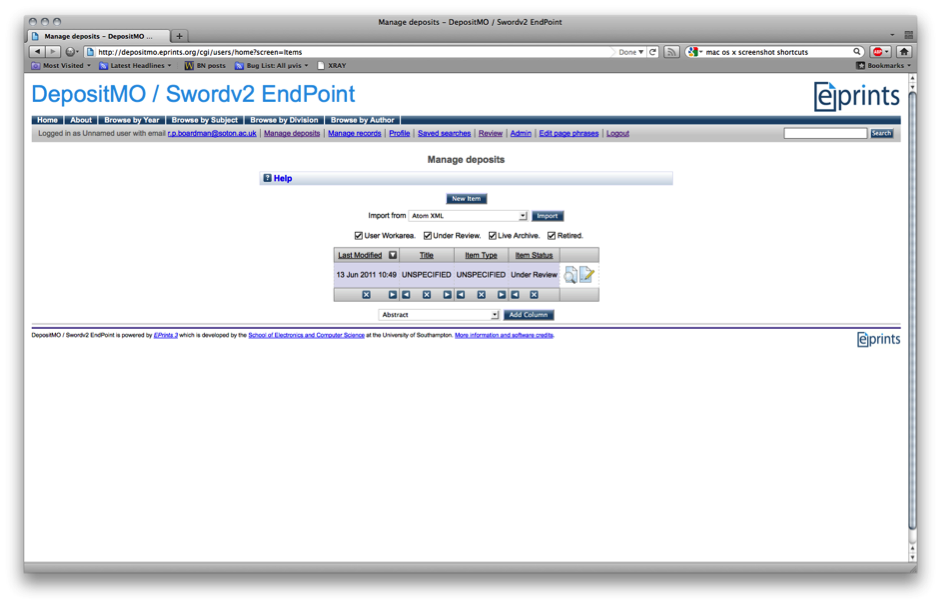


0 Responses
Stay in touch with the conversation, subscribe to the RSS feed for comments on this post.